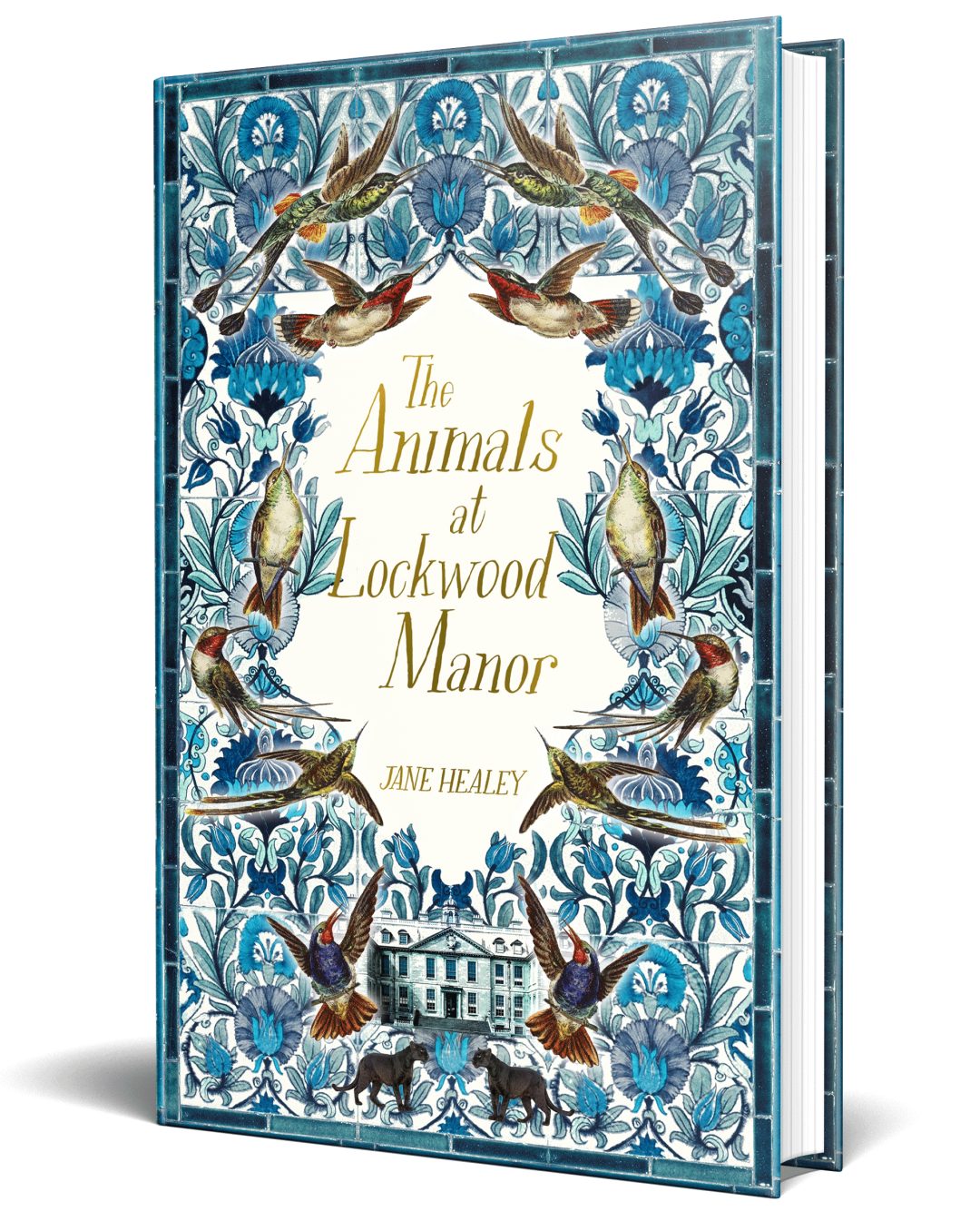The Animals at Lockwood Manor‘s beautiful cover art is, contrary to the proverb, an enticing representation of the novel’s thematic content. Its ornate floral design emblazoned with various birds rising from a stately manor and a focus on the colour blue suggests mystery, despair, femininity, the power of nature and gentry. Protagonist Hetty Cartwright is a museum director whose new role, at the outbreak of the Second World War, is to accompany her museum’s collection of birds and mammals to the titular Lockwood Manor – a country estate whose family are recovering from their own recent tragedy.
Hetty is portrayed as headstrong yet vulnerable, fiercely protective of her taxidermied animals, and willing to confront anyone who puts the museum specimens at risk. She also has a fractured relationship with her adoptive mother, an aspect of her character that is drawn well and incorporated cleverly. Although most of the novel is narrated from Hetty’s perspective, some chapters are written from Lucy Lockwood’s stance. Lucy is the heiress to the manor, daughter of Major Lockwood, and is dealing with the fallout of her mother’s recent death. Her narration always has a melancholic tone to it and her portrayal of events is more tangled than Hetty’s, interwoven with sombre musings on her childhood and ongoing night terrors. Clearly suffering from undiagnosed mental health issues, she is never effectively helped by her father or any of the staff at the manor. Instead, it is Hetty who brings the possibility of hope and change.
It is this relationship between the two characters which allows the novel to transcend its historical fiction, ‘haunted house’ premise (which itself is engaging – stuffed animals disappear, handprints appear on mirrors, eerie figures are spotted in dark corridors). Lucy and Hetty’s developing love becomes the focus and opens up an exploration of same-sex relationships in the era and the idea of shame intermingled with the joy of new love. Even the resolution of the central mystery is more profound than a simple ‘whodunnit’ reveal.
Author Jane Healey has produced an impressive debut. The novel succeeds in key areas: rich evocation of setting, characterisation of multi-faceted women, and the development of an unravelling mystery at an engaging pace. The Animals at Lockwood Manor works effectively as an entertaining gothic novel paying homage to Daphne du Maurier’s Rebecca, as well as a consideration of 1940s gender roles, mental health, abuse, and sexuality.
